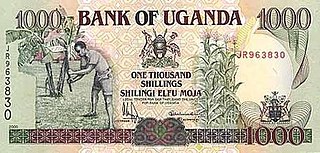 W
WThe 1000 yen note (¥1000) is currently the lowest value yen banknote and has been used since 1945, excluding a brief period between 1946 and 1950 during the American occupation of Japan. The fifth series notes are currently in circulation, and are the smallest of the three common bank notes, measuring 150 x 76 mm. The front side shows a portrait of Hideyo Noguchi, who in 1911 discovered the agent of syphilis as the cause of progressive paralytic disease. The reverse depicts Mount Fuji and cherry blossoms, adapted from a photograph by Koyo Okada. It was first issued on 1 November 2004. Extensive anti-counterfeiting measures are present in the newest banknotes. They include intaglio printing, holograms, microprinting, fluorescent ink, latent images, watermarks, and angle-sensitive ink. While the older notes are no longer issued, they continue to be legal tender.
 W
WThe Indian 1000-rupee banknote was a denomination of the Indian rupee. It was first introduced by the Reserve Bank of India in 1938 under British rule and subsequently demonetized in 1946. Post-independence, the denomination was re-introduced in 1954. In January 1978, all high-denomination banknotes of ₹1000, ₹5,000, and ₹10,000 were demonetized in order to curb unaccounted cash money.
 W
WThe Philippine one thousand-peso note is a denomination of Philippine currency. It is the largest denomination in general circulation in the Philippines. José Abad Santos, Vicente Lim, and Josefa Llanes Escoda are currently featured on the front side of the notes, while the Tubbataha Reefs Natural Park and the South Sea pearl are featured on the back side of the note.
 W
W W
W W
W W
W W
W W
W W
W W
W W
W W
W W
W W
W W
W W
W W
W W
W W
W W
W W
W W
W W
W W
W W
W W
W W
W W
W W
W W
W W
W W
W W
W W
W W
W W
W W
W